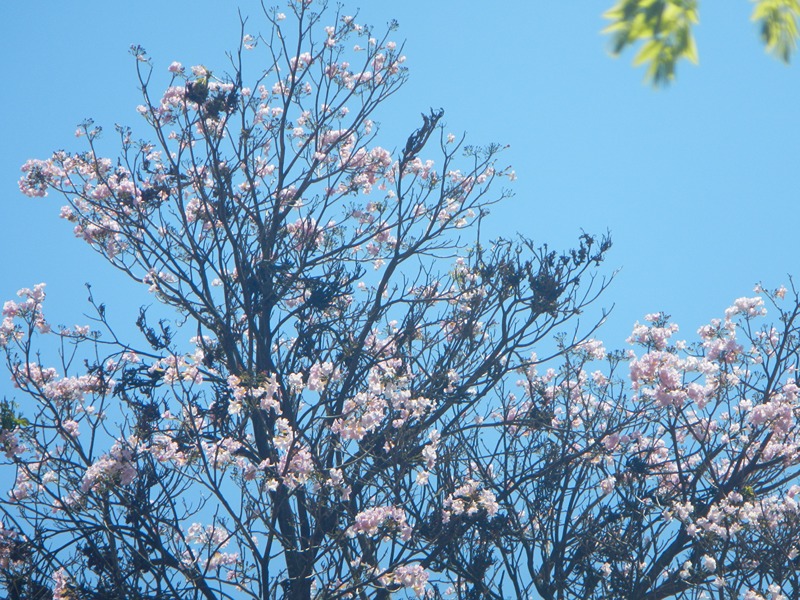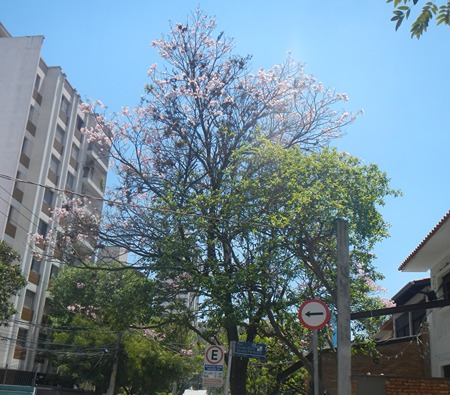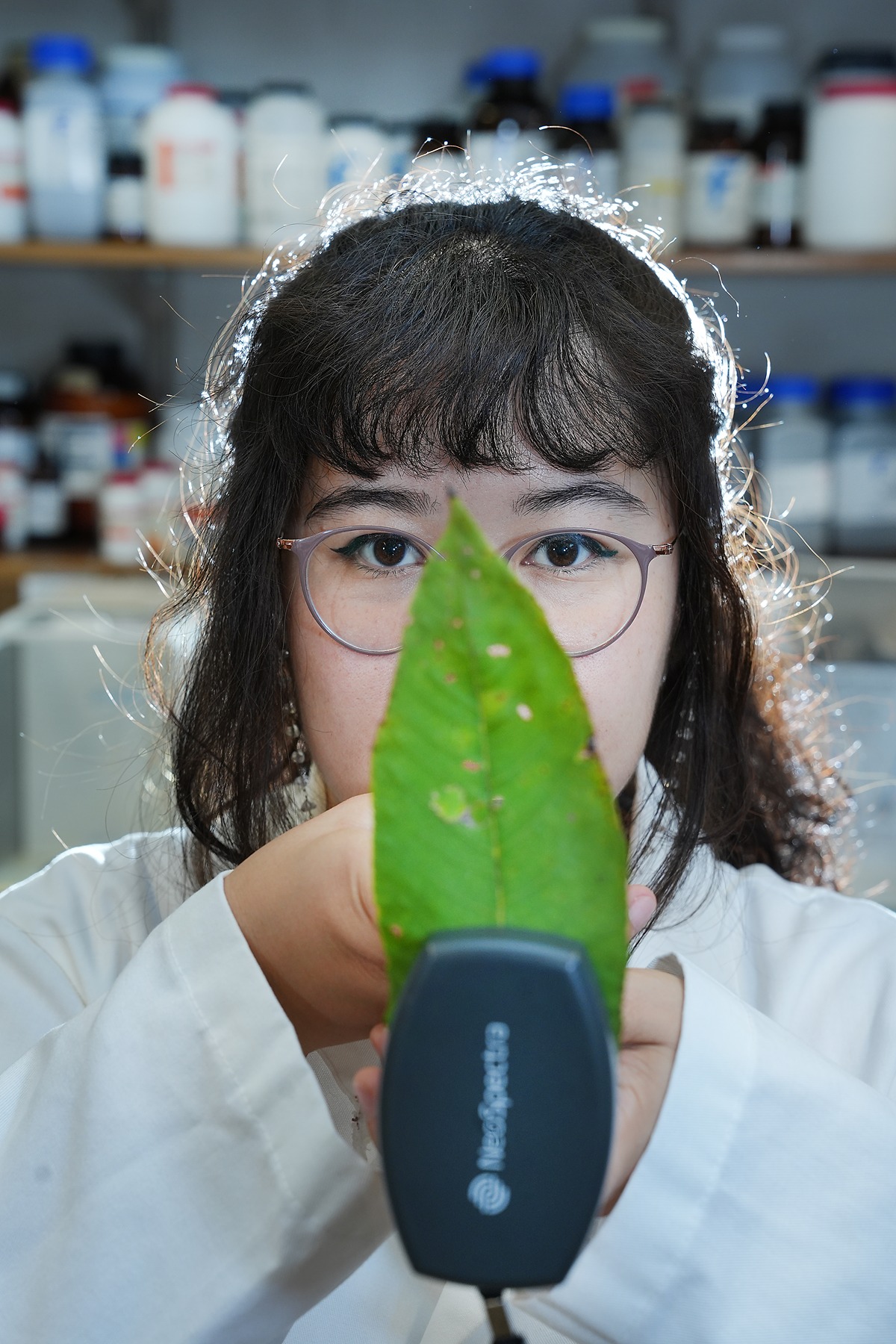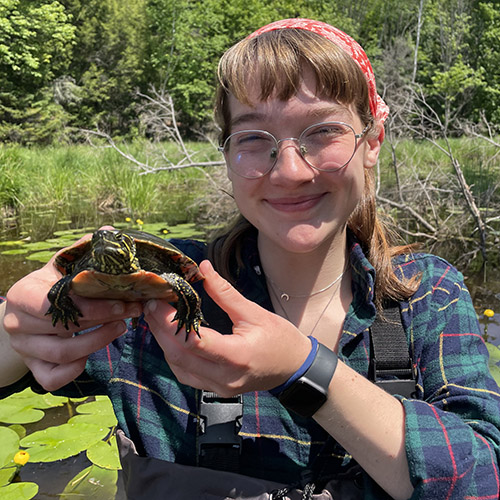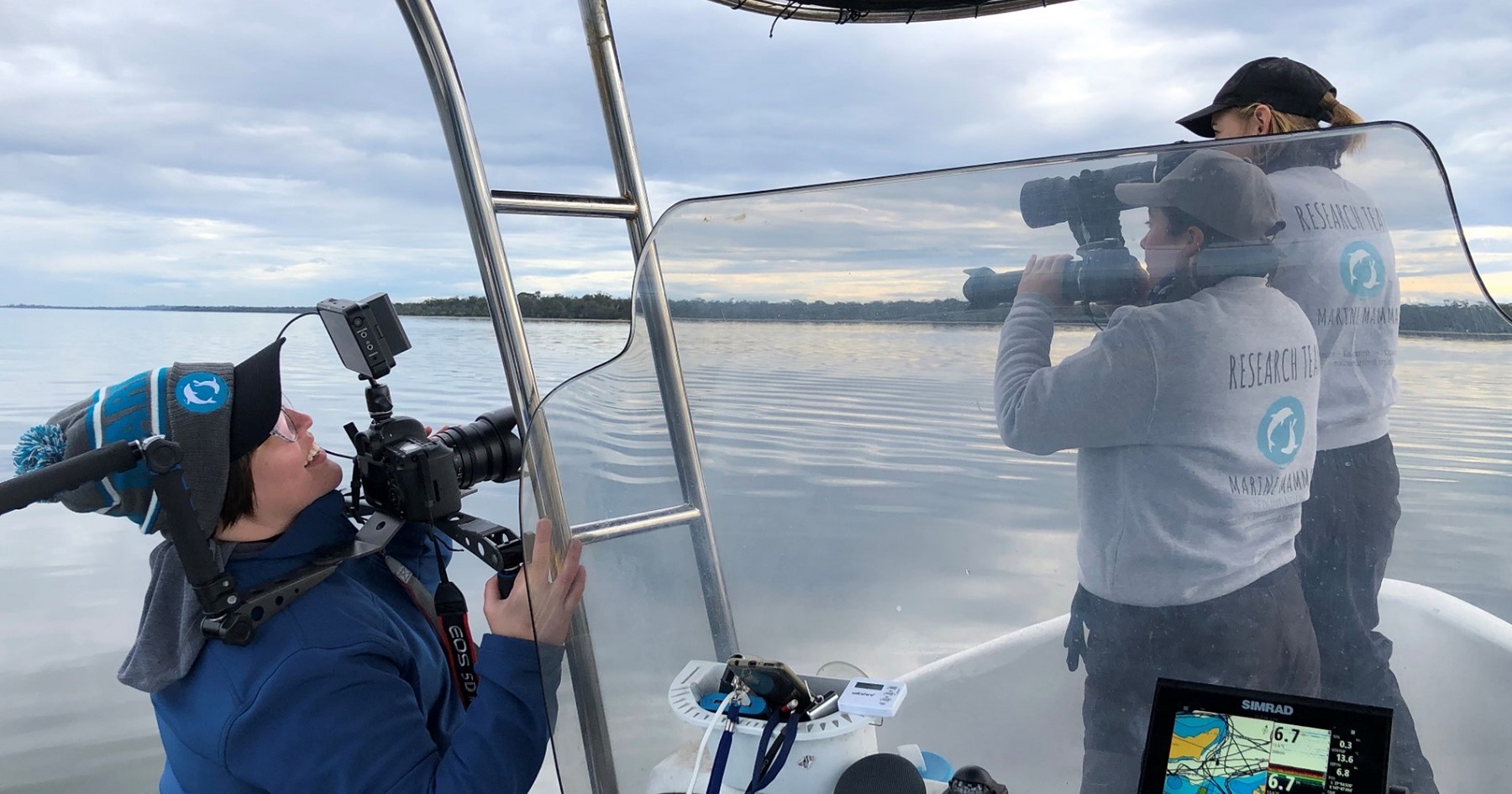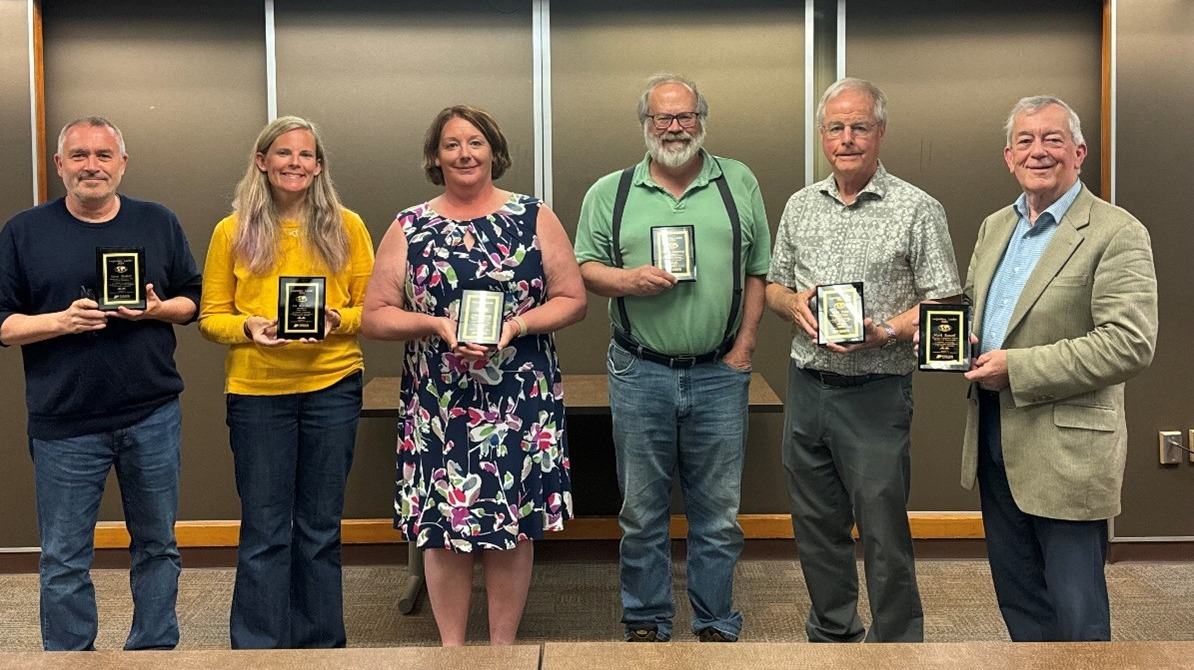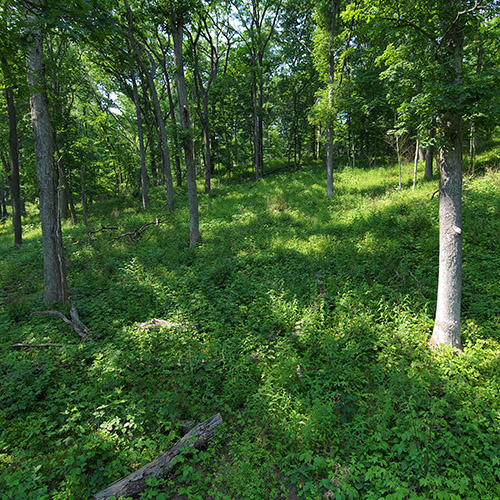The national flower of Brazil, known locally as Ipê (Handroanthus and Tabebuia), is under attack by a phytoplasma. These parasitic bacteria are carried from tree to tree by insects feeding on or burrowing in the Ipê wood, and they infect the tree all the way to its vascular tissue that conducts water and sugars throughout the rest of the plant. This means that the infection can be transported quickly to all the plant tissue.
Little phytoplasma in something as big as a tree might not seem like a pressing issue, but these phytoplasma do more than colonize. They’re actually able to force a little bit of their genetics into the plants’ genome and control its growth and metabolism. When infected, the Ipê tree grows lots of branches from one spot “like a cancer,” giving the disease its common name, witches’ broom.
Mariana Saito, a PhD candidate with a background in forestry and plant pathology, came to the United States as a visiting scholar from the University of São Paulo in Brazil to learn how to tackle the phytoplasma problems in her country from Purdue University’s experts in the Institute for Digital Forestry in the College of Agriculture. She’s working with Anna Conrad, a research plant pathologist with the USDA Forest Service Northern Research Station, and Doug Jacobs, the Fred M van Eck Professor of Forest Biology, to use near-infrared spectroscopy (NIR) to detect bacterial infections in trees—even when their symptoms, like witches’ brooms, aren’t visible.
Saito explained that some of the biggest obstacles to fighting phytoplasma in Brazil are more social than scientific. “The trees can make their symptoms less conspicuous by dropping the branches with the disease. That might sound good, but it is just the tree trying to survive. Or, some people might prune the ugly parts of the trees away and say, ‘Oh, it looks nice.’ Taking the witches’ brooms off the tree makes people think that it is healthy, even though the pathogen is still in the rest of the tree.”
Even after the diseased branches have been dropped or cut away, the pathogenic phytoplasma still lingers in the tree’s vascular tissue. This not only means that the phytoplasma could cause disease on another branch, but the tree itself could still be infectious and insects that visit it could carry phytoplasma from it to healthy trees. Right now, the phytoplasma are host-specific and only infect one cultivar of Ipê in Brazil, a non-native variety.
The pink Ipê (Tabebuia penthaphylla) is from El Salvador. When it was brought to Brazil for its beautiful rosy color, it brought with it the phytoplasma that causes witches’ brooms. The native Brazilian Ipê aren’t susceptible to the disease yet, but the more it spreads through the pink Ipê population, the more it puts nearby native Ipê populations in danger.
“In Brazil, we have the yellow Ipê, the purple one, the white one, and the problem we have is that everyone loves the pink one.” Saito shared. “They’re gorgeous, and they’re planted everywhere. So, when I tell people they have to cut it down, they tell me no.”
Saito has turned to technology in hopes of creating a quick diagnostic test that doesn’t require visible symptoms. To get a NIR reading, Saito clips a sensor around the leaves from a tree and takes a couple readings, which only takes a few minutes. On her computer, those readings show up as a line graph of the reflectance of the leaf across the different wavelengths of light. Through small differences in those spectroscopy graphs, Saito is learning to tell the difference between leaves that are healthy, leaves that are stressed, and leaves that show symptoms of witches’ broom.
With Conrad and Jacobs, Saito is practicing using NIR to diagnose disease in butternut trees in Indiana. Butternut and other walnut species in Indiana are also susceptible to a phytoplasma that causes witches’ broom symptoms. Saito plans to do a comparative study with the data she gathers here on the butternut trees with the Ipê trees she’ll try the NIR tool on when she returns to Brazil.
“We warmly welcome Mariana to our butternut research group at the Hardwood Tree Improvement and Regeneration Center, where we collaborate to develop new tools to manage tree diseases of concern, both in the Midwest U.S. and abroad,” said Conrad.
Saito’s hope is that this study will help afforestation agents in Brazil track the spread of disease as well as prove to landowners that their trees are infected and must be removed.I hope that this starts a way for us to study forest pathology in urban environments in Brazil. There’s a lack of information about the trees and especially the diseases that happen in afforestation, and this can help us deal with the trouble that we are having now and maybe help us to know how to deal with the problems that could arrive in a couple years.”
- Mariana Saito, Visiting Scholar in Forestry and Natural Resources
